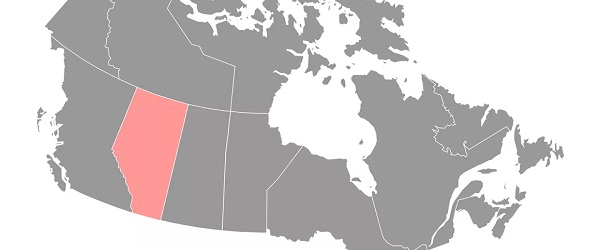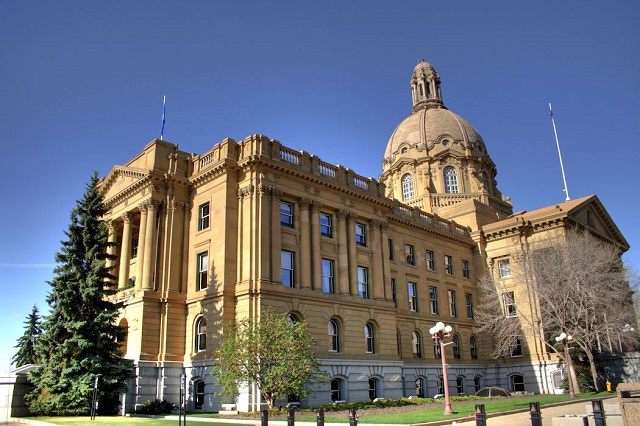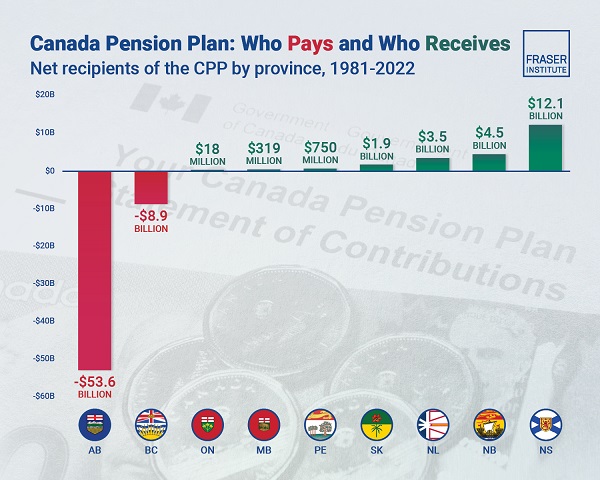Alberta
Energy Companies calling on average Canadians to make oil and gas top of mind for federal politicians

Three of Canada’s top energy sector leaders are asking average Canadians to boost Canada’s energy industry ahead of this fall’s federal election. The Presidents of Cenovus Energy, Canadian Natural Resources Limited, and MEG Energy have penned an “Open Letter to Canadians” urging everyone to talk to federal candidates about supporting the energy sector.
The letter makes a simple assessment of the facts surrounding energy creation worldwide and asks Canadians to back our own companies as they attempt to lead the way toward “a lower carbon future”…
Open letter to Canadians from:
Tim McKay, Canadian Natural Resources Limited,
Alex Pourbaix, Cenovus Energy,
Derek Evans, MEG Energy
We have big decisions to make as a country, and there is an opportunity for each of you to influence the outcome.
Canadians want to know what the energy sector is doing to address the global climate change challenge while working to strengthen our economy.
As energy company leaders, we believe Canada is ideally positioned to do its part to both positively impact climate change and ensure a strong and vibrant economy for the future.
This is not an ‘either’ ‘or’ conversation, it’s an ‘and’ conversation.
The world needs more energy to sustain a growing global economy that is expected to lift three billion people out of poverty in the decades ahead. We need more wind, solar and hydro, but oil and natural gas remain a large part of the mix too. This is true in even the most optimistic scenarios for the worldwide adoption of renewable energy.
The world also needs to significantly reduce greenhouse gas emissions. But shutting down Canada’s oil industry will have little impact on global targets. In fact, it could have the opposite effect, with higher carbon fuels replacing our lower emissions products.
A healthy Canadian oil and natural gas industry is vital in leading the way to a lower carbon future.
Made-in-Canada technologies that reduce emissions at our oil and natural gas operations could be adapted for sharing with other industries worldwide. We are already making meaningful progress developing those solutions.
We’ve reduced the emissions intensity in the oil sands by about 30% over the past two decades, and a number of oil sands operations are producing oil with a smaller greenhouse gas impact than the global average. We’re working to get those numbers even lower.
And Canada’s energy companies are the country’s single largest investors in clean tech. Through organizations such as Canada’s Oil Sands Innovation Alliance (COSIA), Petroleum Technology Alliance Canada (PTAC) and the Clean Resource Innovation Network (CRIN) we are continuing to work on – and share – breakthrough technologies.
But we can’t do it alone.
And that’s why we are writing this letter.
As we head into the upcoming election, we are asking you to join us in urging Canada’s leaders of all political stripes to help our country thrive by supporting an innovative energy industry. One that can contribute to solving the global climate change challenge and play a significant role in creating future energy solutions by developing our resources in the cleanest most responsible way possible today.
The choices we make will determine the quality of life we create for ourselves and future generations. These choices will impact our ability to fund schools, hospitals, parks and the social programs that we as Canadians so deeply value.
This isn’t about any particular pipeline, policy or province. This is about the future of Canada.
- Cenovus, Christina Lake
- Cenovus, Christina Lake
- Cenovus, Christina Lake

Tim McKay
President Canadian Natural Resources Limited

Alex Pourbaix
President & CEO Cenovus Energy

Derek Evans
President & CEO MEG Energy
2025 Federal Election
Next federal government should recognize Alberta’s important role in the federation

From the Fraser Institute
By Tegan Hill
With the tariff war continuing and the federal election underway, Canadians should understand what the last federal government seemingly did not—a strong Alberta makes for a stronger Canada.
And yet, current federal policies disproportionately and negatively impact the province. The list includes Bill C-69 (which imposes complex, uncertain and onerous review requirements on major energy projects), Bill C-48 (which bans large oil tankers off British Columbia’s northern coast and limits access to Asian markets), an arbitrary cap on oil and gas emissions, numerous other “net-zero” targets, and so on.
Meanwhile, Albertans contribute significantly more to federal revenues and national programs than they receive back in spending on transfers and programs including the Canada Pension Plan (CPP) because Alberta has relatively high rates of employment, higher average incomes and a younger population.
For instance, since 1976 Alberta’s employment rate (the number of employed people as a share of the population 15 years of age and over) has averaged 67.4 per cent compared to 59.7 per cent in the rest of Canada, and annual market income (including employment and investment income) has exceeded that in the other provinces by $10,918 (on average).
As a result, Alberta’s total net contribution to federal finances (total federal taxes and payments paid by Albertans minus federal money spent or transferred to Albertans) was $244.6 billion from 2007 to 2022—more than five times as much as the net contribution from British Columbians or Ontarians. That’s a massive outsized contribution given Alberta’s population, which is smaller than B.C. and much smaller than Ontario.
Albertans’ net contribution to the CPP is particularly significant. From 1981 to 2022, Alberta workers contributed 14.4 per cent (on average) of total CPP payments paid to retirees in Canada while retirees in the province received only 10.0 per cent of the payments. Albertans made a cumulative net contribution to the CPP (the difference between total CPP contributions made by Albertans and CPP benefits paid to retirees in Alberta) of $53.6 billion over the period—approximately six times greater than the net contribution of B.C., the only other net contributing province to the CPP. Indeed, only two of the nine provinces that participate in the CPP contribute more in payroll taxes to the program than their residents receive back in benefits.
So what would happen if Alberta withdrew from the CPP?
For starters, the basic CPP contribution rate of 9.9 per cent (typically deducted from our paycheques) for Canadians outside Alberta (excluding Quebec) would have to increase for the program to remain sustainable. For a new standalone plan in Alberta, the rate would likely be lower, with estimates ranging from 5.85 per cent to 8.2 per cent. In other words, based on these estimates, if Alberta withdrew from the CPP, Alberta workers could receive the same retirement benefits but at a lower cost (i.e. lower payroll tax) than other Canadians while the payroll tax would have to increase for the rest of the country while the benefits remained the same.
Finally, despite any claims to the contrary, according to Statistics Canada, Alberta’s demographic advantage, which fuels its outsized contribution to the CPP, will only widen in the years ahead. Alberta will likely maintain relatively high employment rates and continue to welcome workers from across Canada and around the world. And considering Alberta recorded the highest average inflation-adjusted economic growth in Canada since 1981, with Albertans’ inflation-adjusted market income exceeding the average of the other provinces every year since 1971, Albertans will likely continue to pay an outsized portion for the CPP. Of course, the idea for Alberta to withdraw from the CPP and create its own provincial plan isn’t new. In 2001, several notable public figures, including Stephen Harper, wrote the famous Alberta “firewall” letter suggesting the province should take control of its future after being marginalized by the federal government.
The next federal government—whoever that may be—should understand Alberta’s crucial role in the federation. For a stronger Canada, especially during uncertain times, Ottawa should support a strong Alberta including its energy industry.
Alberta
Province announces plans for nine new ‘urgent care centres’ – redirecting 200,000 hospital visits

Expanding urgent care across Alberta
If passed, Budget 2025 includes $17 million in planning funds to support the development of urgent care facilities across the province.
As Alberta’s population grows, so does the demand for health care. In response, the government is making significant investments to ensure every Albertan has access to high-quality care close to home. Currently, more than 35 per cent of emergency department visits are for non-life-threatening conditions that could be treated at urgent care centres. By expanding these centres, Alberta’s government is enhancing the health care system and improving access to timely care.
If passed, Budget 2025 includes $15 million to support plans for eight new urgent care centres and an additional $2 million in planning funds for an integrated primary and urgent care facility in Airdrie. These investments will help redirect up to 200,000 lower-acuity emergency department visits annually, freeing up capacity for life-threatening cases, reducing wait times and improving access to care for Albertans.
“More people are choosing to call Alberta home, which is why we are taking action to build capacity across the health care system. Urgent care centres help bridge the gap between primary care and emergency departments, providing timely care for non-life-threatening conditions.”
“Our team at Infrastructure is fully committed to leading the important task of planning these eight new urgent care facilities across the province. Investments into facilities like these help strengthen our communities by alleviating strains on emergency departments and enhance access to care. I am looking forward to the important work ahead.”
The locations for the eight new urgent care centres were selected based on current and projected increases in demand for lower-acuity care at emergency departments. The new facilities will be in west Edmonton, south Edmonton, Westview (Stony Plain/Spruce Grove), east Calgary, Lethbridge, Medicine Hat, Cold Lake and Fort McMurray.
“Too many Albertans, especially those living in rural communities, are travelling significant distances to receive care. Advancing plans for new urgent care centres will build capacity across the health care system.”
“Additional urgent care centres across Alberta will give Albertans more options for accessing the right level of care when it’s needed. This is a necessary and substantial investment that will eventually ease some of the pressures on our emergency departments.”
The remaining $2 million will support planning for One Health Airdrie’s integrated primary and urgent care facility. The operating model, approved last fall, will see One Health Airdrie as the primary care operator, while urgent care services will be publicly funded and operated by a provider selected through a competitive process.
“Our new Airdrie facility, offering integrated primary and urgent care, will provide same-day access to approximately 30,000 primary care patients and increase urgent care capacity by around 200 per cent, benefiting the entire community and surrounding areas. We are very excited.”
Alberta’s government will continue to make smart, strategic investments in health facilities to support the delivery of publicly funded health programs and services to ensure Albertans have access to the care they need, when and where they need it.
Budget 2025 is meeting the challenge faced by Alberta with continued investments in education and health, lower taxes for families and a focus on the economy.
Quick facts
- The $2 million in planning funds for One Health Airdrie are part of a total $24-million investment to advance planning on several health capital initiatives across the province through Budget 2025.
- Alberta’s population is growing, and visits to emergency departments are projected to increase by 27 per cent by 2038.
- Last year, Alberta’s government provided $8.4 million for renovations to the existing Airdrie Community Health Centre.
Related information
-

 Alberta2 days ago
Alberta2 days agoAlberta Institute urging Premier Smith to follow Saskatchewan and drop Industrial Carbon Tax
-

 Addictions2 days ago
Addictions2 days agoShould fentanyl dealers face manslaughter charges for fatal overdoses?
-

 Also Interesting1 day ago
Also Interesting1 day agoThe bizarre story of Taro Tsujimoto
-

 Alberta2 days ago
Alberta2 days agoAlbertans have contributed $53.6 billion to the retirement of Canadians in other provinces
-

 2025 Federal Election2 days ago
2025 Federal Election2 days agoChinese Gangs Dominate Canada: Why Will Voters Give Liberals Another Term?
-

 Health1 day ago
Health1 day agoRFK Jr. Drops Stunning Vaccine Announcement
-

 Energy2 days ago
Energy2 days agoEnergy, climate, and economics — A smarter path for Canada
-

 2025 Federal Election23 hours ago
2025 Federal Election23 hours agoSoaked, Angry, and Awake: What We Saw at Pierre Poilievre’s Surrey Rally








